We’re in the winter tunnel up here in Vermont. While day length is growing into positive territory, a pile of weeks and snow still stands between us and beds of hopeful crocus. Will we make it? Maybe. I’m never sure until the trees on the hill wave chartreuse victory and slow-to-show spring dumps meltwater on my doubts.
No matter where you are, the dark seasons require their own survival kit. In November and December we have the life raft of food and gatherings. But January brings more solitude than communion; we’re on our own, slugging it out with resolutions and the weight of the coming year.
Janus, January’s namesake, a Roman deity of portals, doors and gates, was said to have had two faces – one looking backward and the other looking forward. I don’t care for the rearview much. Instead, I find myself staring straight into darkness, down snow-covered paths. Here’s how I survive.
Each evening I pull myself away from our woodstove and drive to a deserted trailhead. It starts as you might imagine: slow, stiff, heavy-footed, and cold (last week the air temp was -13°F). But once I’m moving things begin to transform.
Out of the shadows a world appears: I’m running in a sunken forest. Titanic forms – shipyards of submerged shapes under blankets of snowy silt – hold themselves suspended, sleeping. I pass scuttled hemlock galleons with white birch cannons and granite hulls. A sea of quiet. Here, I can be still, too. And warm to the idea of a crow-black night. And darkness. And waiting for spring.
If this doesn’t inspire any affinity for the middle of night, here’s something else that I keep returning to. It’s the opening from Under Milk Wood by Dylan Thomas (of “Do not go gentle into that good night” fame). I’ll leave you with his words and, to accompany them, a recipe for a dark bread with black sesame and black “riso venere” rice.
Lean into the darkness, friends. But keep moving. And carry a light.
Martin (with gratitude for you and spring)
Under Milk Wood (opening extract)
FIRST VOICE:
To begin at the beginning:
It is Spring, moonless night in the small town, starless and bible-black, the cobblestreets silent and the hunched, courters'-and- rabbits' wood limping invisible down to the sloeblack, slow, black, crowblack, fishingboat-bobbing sea. The houses are blind as moles (though moles see fine to-night in the snouting, velvet dingles) or blind as Captain Cat there in the muffled middle by the pump and the town clock, the shops in mourning, the Welfare Hall in widows' weeds. And all the people of the lulled and dumbfound town are sleeping now.
(I encourage you to continue here.)
The recipe.
Let’s bake. I’ve had a bag of black “riso nero,” or “riso venere,” on my ingredient shelf since early 2020. I bought it after taking a class with the Italian baker, Ezio Marinato, where he demonstrated a black rice bread.
While I did order the rice I have from an importer, I’ve also seen black rice available at the grocery store sold as both “forbidden rice,” and “black heirloom rice.”
After many iterations I’ve arrived at a formula that I like. The violet crumb accented with bits of dark rice has a rich flavor and excellent keeping quality due to the cooked rice starch. A robust bake adds just a touch of bitterness to counter the malty sweetness of the rice and nutty sesame seeds. Enjoy!
Sesame Riso Nero
The process steps for this loaf are similar to that of many hearth breads. The day before I plan to mix I set a whole wheat sourdough preferment and cook the black rice. On day two I mix, ferment, then divide and shape. At that point I can choose to either proof and bake directly or, use cold fermentation to chill the shaped loaves overnight and bake them the following day.
Evening, day one:
Water, 1250g
Salt, 6g
Riso Venere, 150g
(While I ordered Italian rice from an importer, I’ve since found similar grains at a chain grocer sold as “black heirloom rice,” or, “forbidden rice.” Note that black rice is not the same as “wild rice.” I’ve not tested the recipe with wild rice — it might work.)
Prepare the black rice. In a large pot bring the water, salt, and rice to a boil then reduce to a simmer and cook for 30 minutes. Cool then strain. Note that yields may vary depending on rice variety and evaporation. I’ve buffered the amounts required for the recipe to ensure you have a little extra of both the cooked rice and liquid.
Water, 134g
Sourdough culture, 19g
Whole wheat flour, 191g
Mix the whole wheat levain. In a medium bowl combine the water and sourdough culture, whisking until the culture is fully dispersed. Add the flour and knead until the mixture is homogeneous. Note that this is a very stiff preferment — it will take a minute to come together. Cover tightly and place in a warm spot. When ripe and ready it should feel slightly puffy and smell sour.
Morning, day two:
Rice liquid, 439g*
Whole wheat levain, 344g
Bread flour (12.7%), 573g
Instant yeast, 1g (scant 1/2 t), optional
*Warm the rice liquid briefly to an appropriate temperature for the mix. In cool months I use between 95°F and 100°F (for a kitchen temperature that’s around 65°F). For best results use desired dough temperature.
In a large bowl or 6-qt container combine the warmed rice water and whole wheat levain. Break up the mixture with your hands then switch to a whisk to more fully disperse. The stiff levain will resist this process, that’s normal. Once the starter is mostly broken up and dispersed, add the bread flour and optional yeast if you want it (the small amount of yeast will help to lighten the loaf, slightly). Stir, then knead and fold in the container until homogenous and no dry bits remain. Rest covered for 20 minutes until the first fold. (See a sample schedule, below.)
First fold: To give the dough a bowl fold, fold from the outside to the center 8 to 12 times, working your way around the container. Cover and rest for 20 minutes.
Rice, cooked and strained, 267g
Salt, 23g
Black sesame seeds, 53g (You may pre-toast the seeds, if desired, for more flavor.)
Add the inclusions: Add the strained black rice, salt, and black sesame seeds to the dough, pinching, squeezing, folding, and kneading in the container until combined. The mass will be a mess but will regain structure with subsequent folds. Cover and rest for 20 minutes.
Second fold: Give the dough a bowl fold, folding from the outside to the center 8 to 12 times. Cover and rest for 60 to 90 minutes.
Third fold: Give the dough a bowl fold, folding from the outside to the center 8 to 12 times. Cover and rest for 90 minutes.
Divide and preshape: Divide the dough into two equal pieces and gently preshape as rounds. Rest on a floured surface for 15 to 30 minutes, covered.
Shape: Shape the doughs as boules or bâtards and place in bannetons dusted with whole wheat flour. *For additional flavor, moisten the loaves then roll through sesame seeds before placing into the bannetons.
Proof: The shaped loaves may be proofed for 90 to 120 minutes and baked or, proofed for 60 minutes then placed in the refrigerator, covered, for 8 to 12 hours.
To bake: Towards the end of proof preheat your oven with a preset baking stone, steel, or covered baker, to 500°F for one hour. Score and load the loaves (adding steam using the method of your choice). After loading reduce the oven to 475°F and bake for 20 minutes. Remove the lids of any covered bakers, lower the heat to 450°F and bake for an additional 20 to 25 minutes, or until the loaves are a deep brown. Turn the oven off and let the loaves coast with the door ajar for an additional 15 to 20 minutes. As with many breads, baking to full color significantly improves flavor.
Sample schedule:
8:00 pm, day one: Mix the preferment, make the rice.
8:00 am, day two: Warm the rice water, scale the rice, mix the dough.
8:20 am: First bowl fold
8:40 am: Add inclusions, fold and knead until combined.
9:00 am: Second bowl fold
10:00 to 10:30 am: Third bowl fold
12:00: Divide and preshape
12:15 pm: Shape
Proof for 90 to 120 minutes or chill covered overnight and bake the next morning.

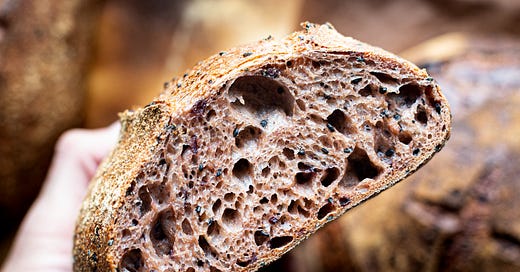


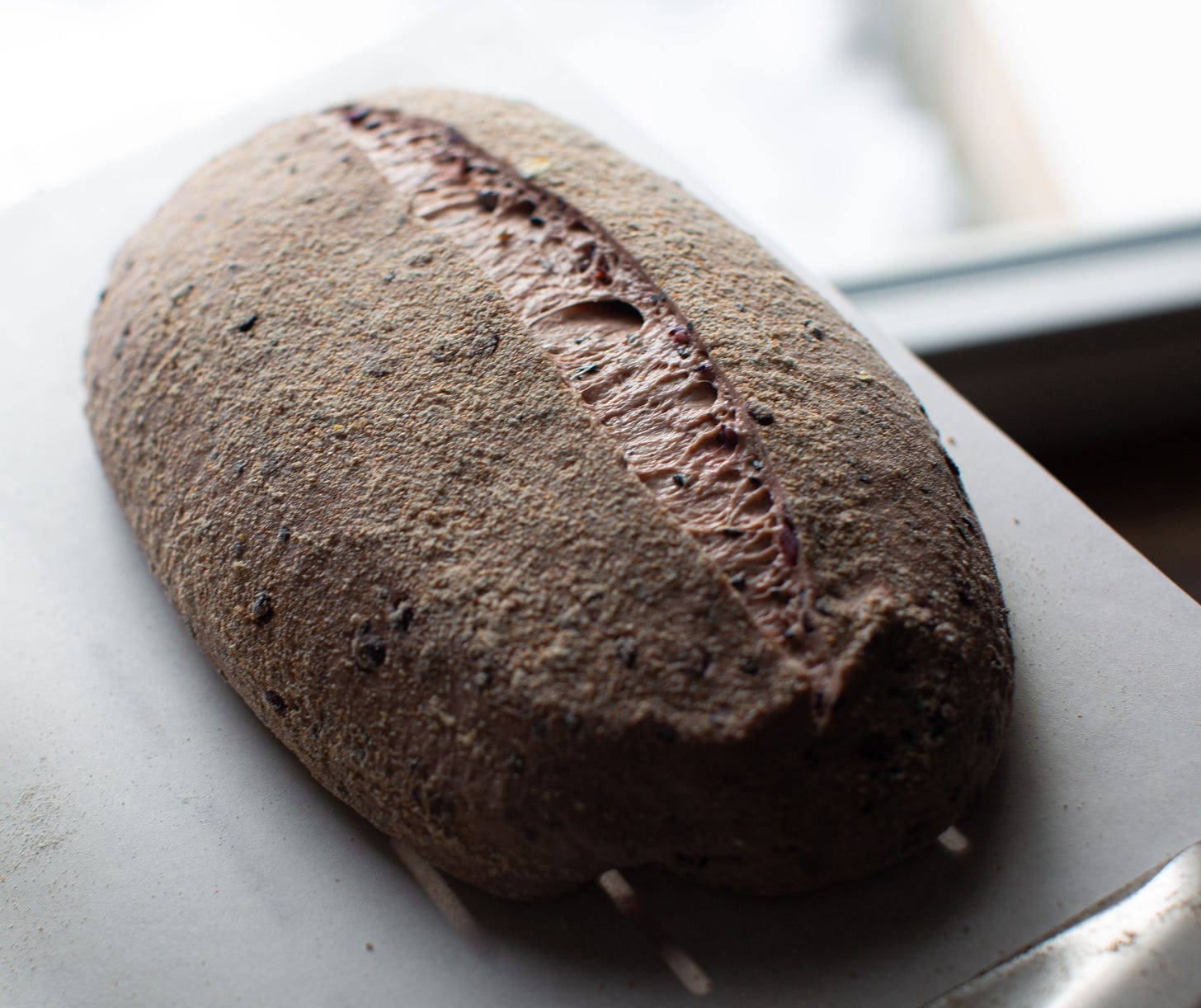
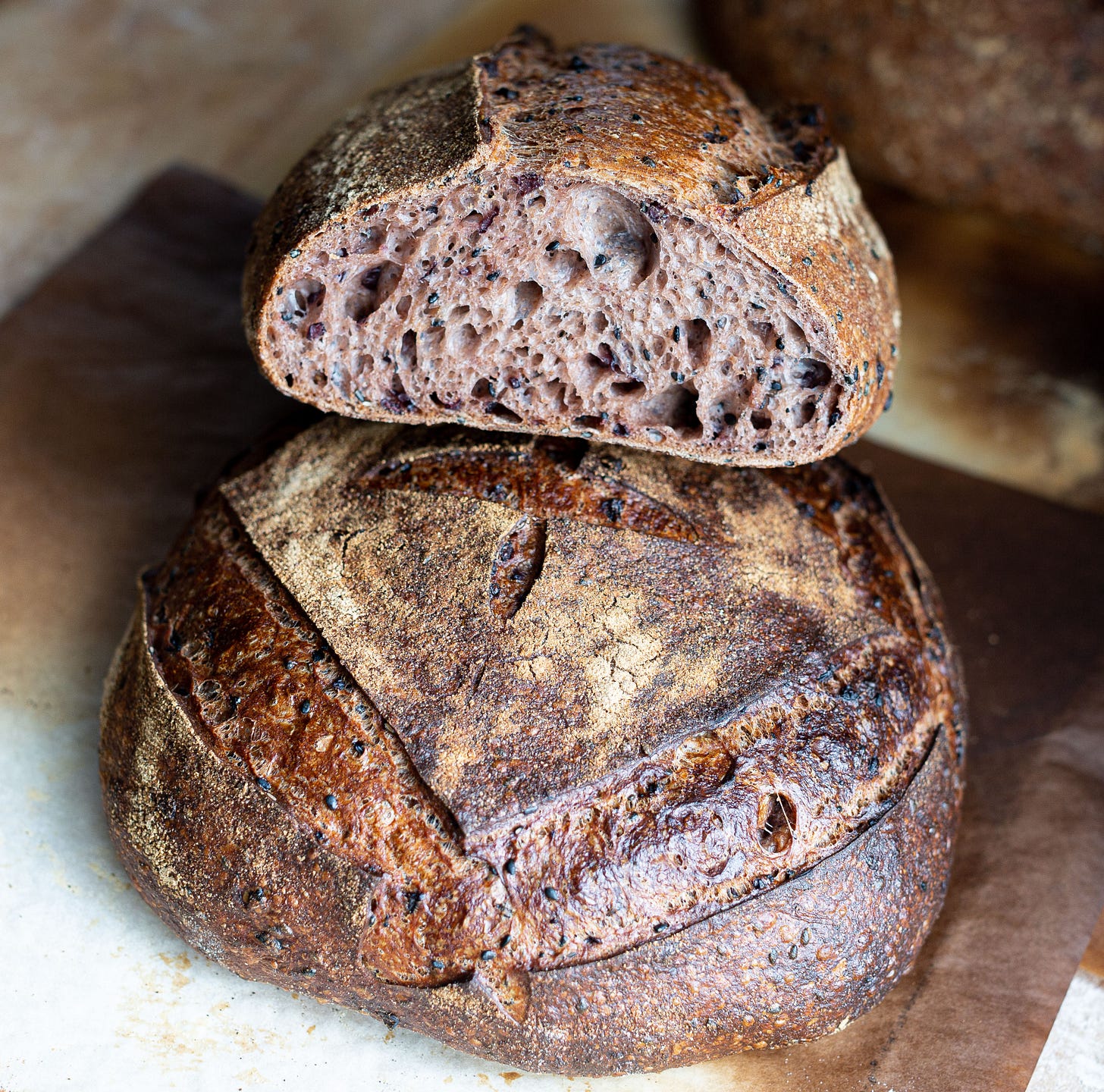
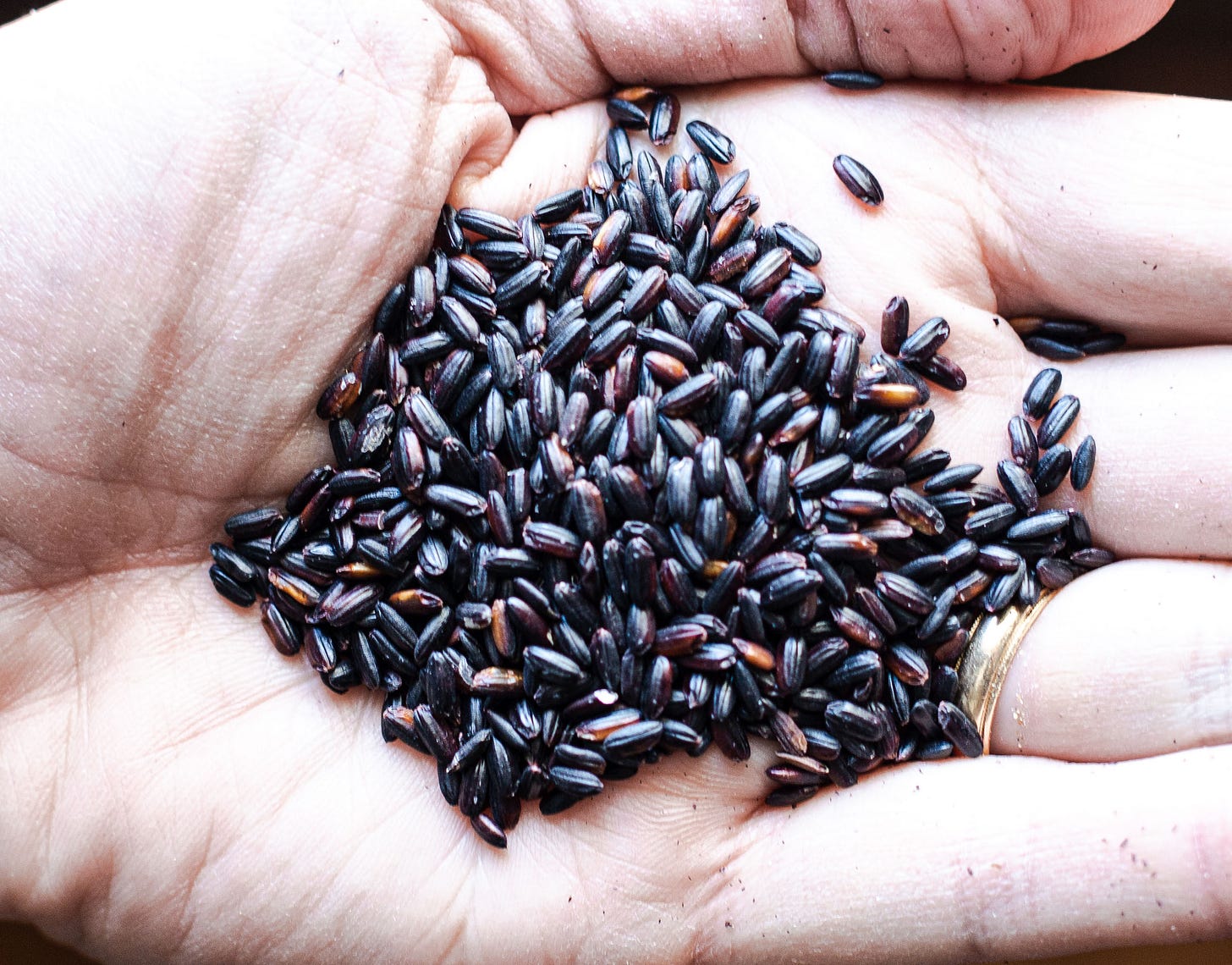
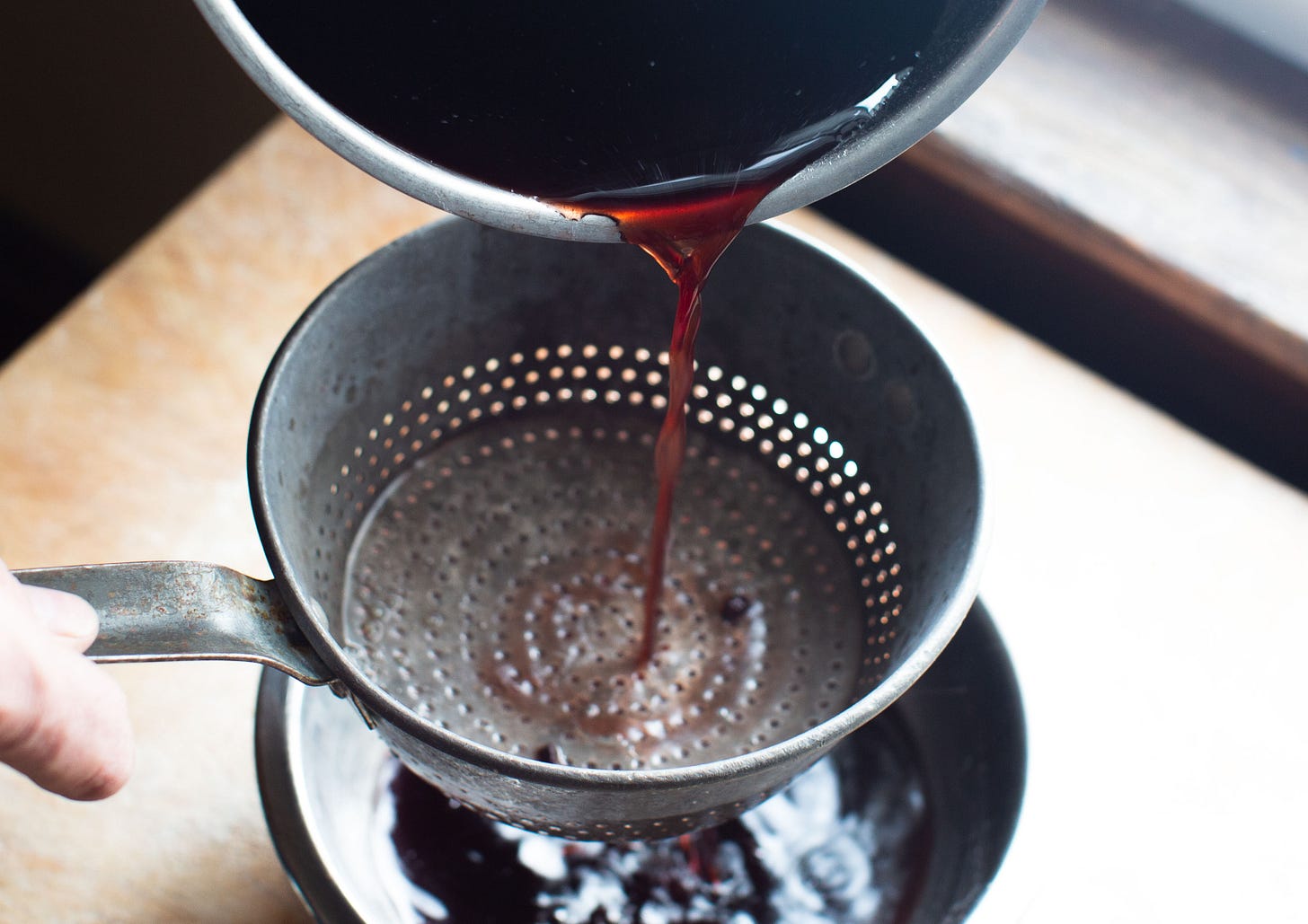
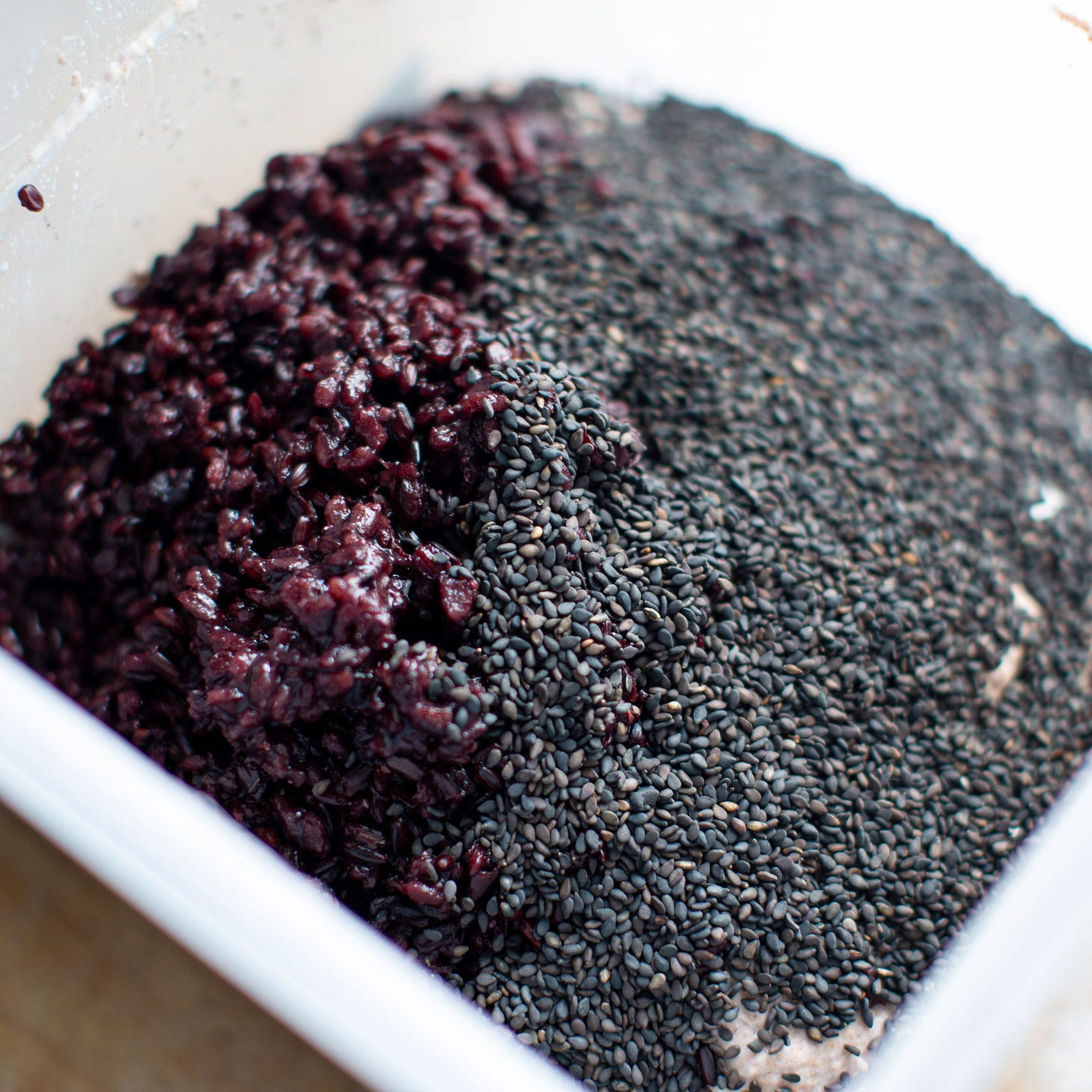
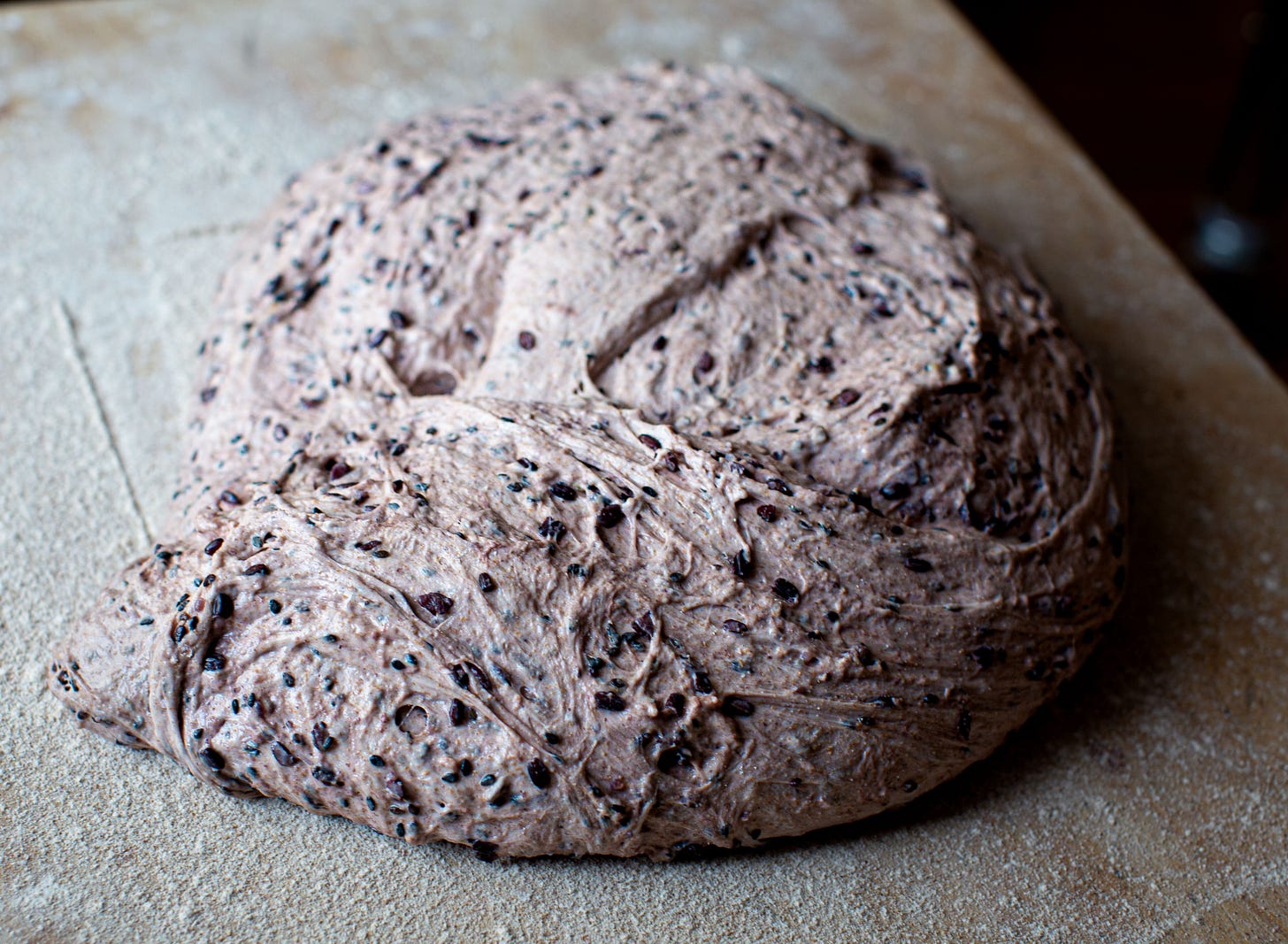
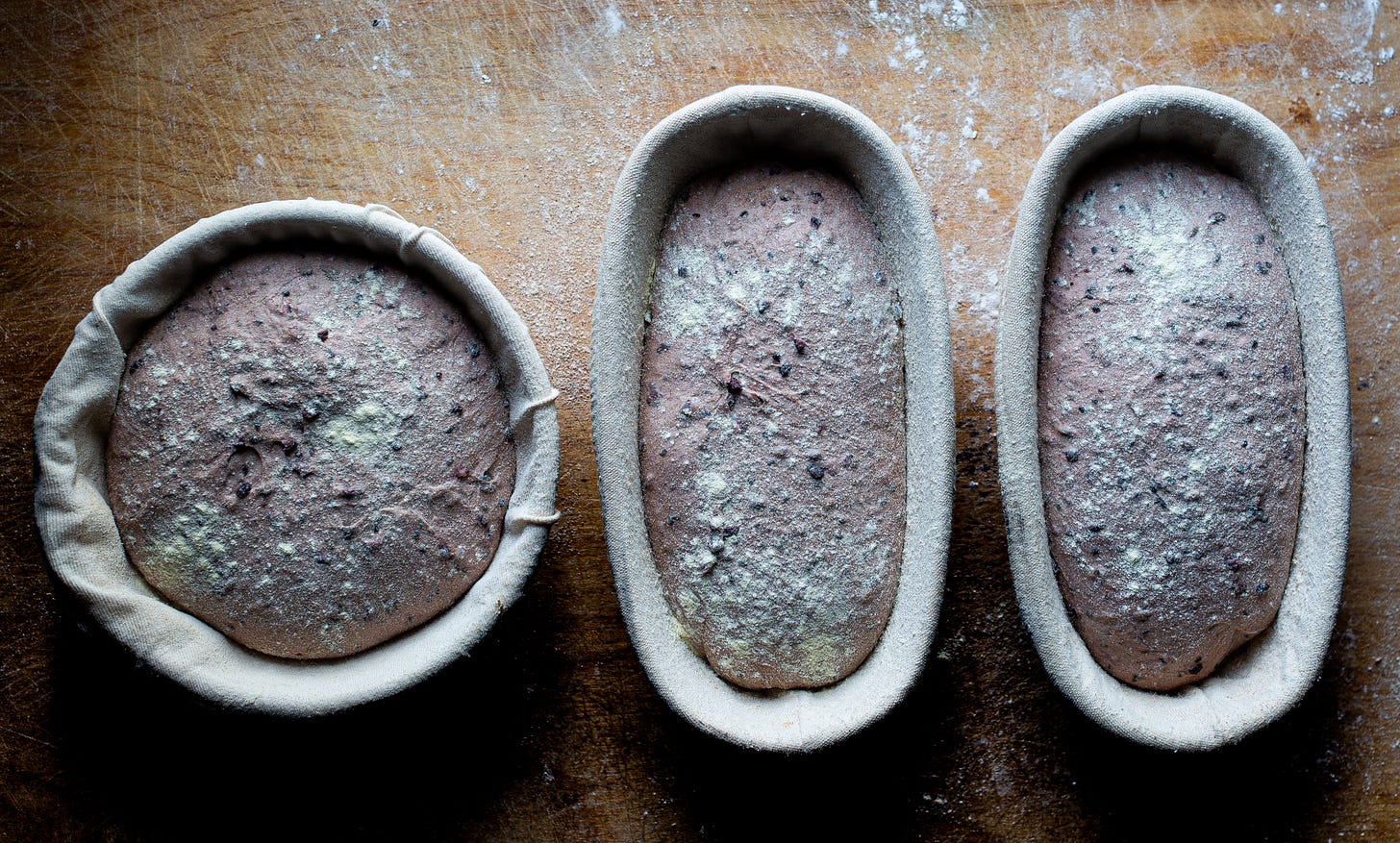
I missed the step on letting the dough rest for 90 min after adding the toppings... Then followed through with 2 more sets of folds, with the dough tearing on me (that's when I realized I missed letting it rest for 90 minutes). I just let it rest 90 minutes and did a set of folds - its stronger but still not there yet. Any tips? Thank you!
This is so inspiring; I’m going to try it once I find the black rice. Love the sample schedule. Every time I try one of your recipes from your Breaking Bread book (Xmas gift last year), I feel so competent even though in general I’m not haha! Thanks for the inspiration.